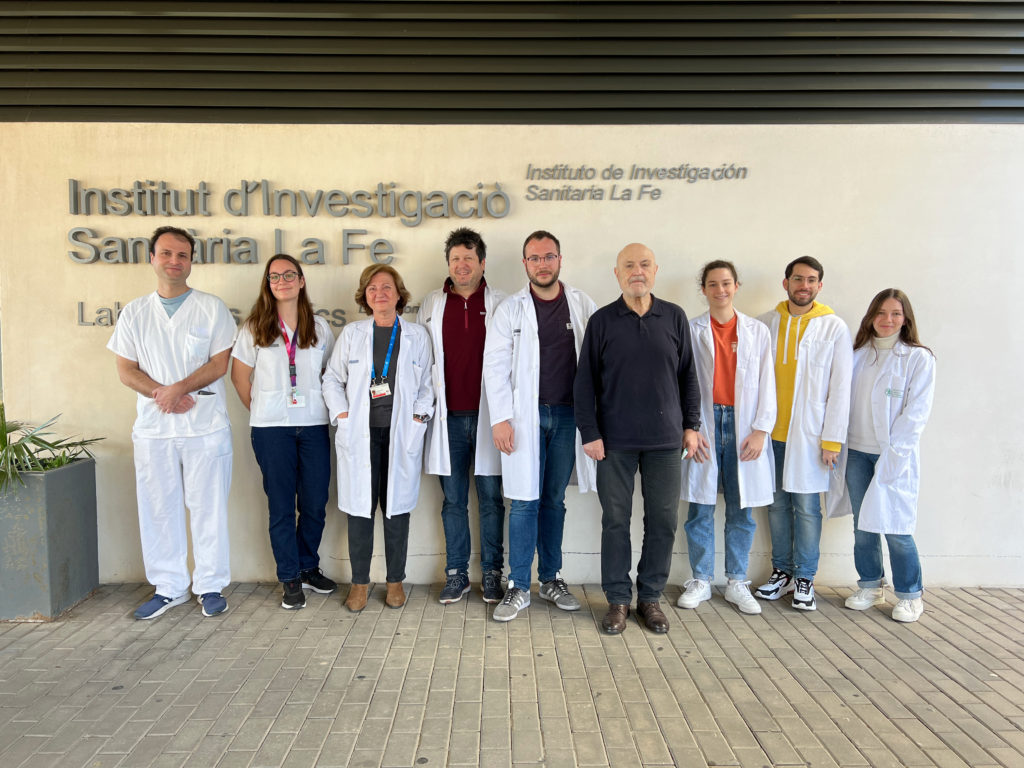A potential treatment for Limb-girdle Muscular Dystrophy 1F/D2 with gene editing gets developed
• Limb-girdle Muscular Dystrophy 1F/D2 (LGMD D2) is an ultra-rare disease that mainly affects the Spanish population.
• Researchers from IIS La Fe in Valencia and CIBERER in collaboration with the Institute of Biotechnology and Biomedicine of the University of Valencia and IIS INCLIVA have used CRISPR-Cas9 gene editing technology to correct the mutation that causes the disease in a cell model .
• The results of this work are presented as a potential treatment for this disease.

Researchers from the IIS La Fe in Valencia and the Center for Networked Biomedical Research in Rare Diseases (CIBERER) have managed to correct the mutation of the gene that causes Limb-girdle Muscular Dystrophy 1F/D2 (LGMD D2) with CRISPR-Cas9 gene editing technology. in cells from patients affected by this disorder, also known as transportin muscular dystrophy. Of the approximately 100 cases of this ultra-rare disease that are known in the world, 90 are located in Spain. The results of this research are presented as a potential treatment for this disease.
The gene that carries the mutation that causes this disease (TNPO3) encodes a protein that is responsible for introducing other proteins related to the metabolism of nucleic acids into the cell nucleus and is also involved in other diseases such as HIV infection. (AIDS). The study was carried out on immortalized muscle cells from a patient suffering from the disease. The research, published in the journal Molecular Therapy – Nucleic Acids, has shown that treated diseased cells regained vitality, corrected various altered functions such as autophagy, and largely recovered previously altered cell function.
The European Reference Unit for Rare Neuromuscular Diseases of the La Fe University Hospital in Valencia, the Neuromuscular Pathology Research Group of the IIS La Fe and the Molecular, Cellular and Genomic Biomedicine Unit of this same institute have collaborated in the research, both integrated into the Center for Biomedical Research in Rare Diseases Network (CIBERER). Researchers from the Institute of Biotechnology and Biomedicine (BIOTECMED) of the University of Valencia and IIS INCLIVA have also participated.
About LGMD D2 Muscular Dystrophy
LGMD D2 muscular dystrophy is an ultra-rare disease with a special incidence in Spain. The 90 cases diagnosed in our country belong to a lineage whose common ancestor inhabited 8 generations ago in a town in the interior of the Murcia region. The disease is basically characterized by progressive muscular paralysis with a wide variability regarding the age of onset, evolution and severity. “The pathogenic mechanisms of this disease are unknown, but this study can help to discover them”, highlights the coordinator of the study, Juan Jesús Vílchez, a researcher at IIS La Fe and CIBERER.
This research has received substantial funding from the Asociación Conquistando Escalones for patients with this disease. To get started, the project also received support from the CIBERER Collaborative Intramural Cooperative Actions (ACCI) program. Subsequently, it has been supported with grants from the FEDER Foundation and the Ministry of Science and Innovation.
Reference article:
CRISPR-Cas9 editing of a TNPO3 mutation in a muscle cell model of limb-girdle muscular dystrophy type D2. Javier Poyatos-García, Águeda Blázquez-Bernal, Marta Selva-Giménez, Ariadna Bargiela, Jorge Espinosa-Espinosa, Rafael P. Vázquez-Manrique, Anne Bigot, Ruben Artero, Juan Jesús Vílchez. Molecular Therapy – Nucleic Acids.



